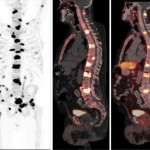Editorial: The robot to the rescue!
Fortunately injuries to the urinary tract remain rare in obstetric and gynaecological surgery. Their potential for causing serious morbidity, not to mention the substantial medico-legal implications ensure that it remains a highly researched and evocative area [1].
Iatrogenic urinary tract injuries can be broadly divided into two groups; acute complications, such as bladder and ureteric lacerations or ligation and more chronic complications, such as vesicovaginal or ureterovaginal fistulae and ureteric strictures. Historically, iatrogenic trauma to the urinary tract most commonly followed open, abdominal hysterectomy with the most frequent complication being direct bladder injury. Gross bladder injuries are generally both detected and treated intraoperatively. In contrast, the management of more complex ureteric injuries and their long-term sequelae, such as fistula, pose greater surgical challenges. The complexity of these injuries is often further compounded by delay in diagnosis. It is generally accepted that, if possible, immediate repair provides the optimal treatment. However, when diagnosis is delayed, there is little consensus on the best management approach, although the current tendency is towards early repair [2].
The multicentre, retrospective study of robotic repair of 49 iatrogenic genitourinary injuries by Gellhaus et al. [3] should therefore serve to reassure gynaecologists with respect to the incidence of this feared complication. This paper, mainly looking at ureteric re-implants and fistula repairs, constitutes the largest cohort of robotic reconstructions to date. A zero conversion rate to open surgery suggests excellent case selection by the robotic surgeons. Four cases had undergone previous failed open or endoscopic management and this is clearly a challenging cohort. Yet, with the absence of total numbers of urology referrals received for such injuries, it is important to remember that it may not be a panacea for all.
There has been a considerable shift in the management of urological trauma from open to laparoscopic techniques. While the repair of basic injuries has been proven to be effective, less data is available to support the management of more complex injuries, such as ureteric transections or fistulae [4]. Numerous techniques for repairing ureteric injuries and fistulae have been described; nonetheless, the surgery remains technically challenging even for experienced laparoscopic surgeons and is generally limited to high-volume centres [5].
In comparison, this article [3] provides strong evidence for the effectiveness of robot-assisted (RA) repairs, even for complex injuries. The enviable 95.9% success rate from 47 operations is complemented by short recovery times and low complication rates. These results are especially impressive in view of the mean 23.5-month delay time to repair. But the authors do not report the reasons for these delays. Immediate robotic repair of RA injuries is clearly feasible especially in larger units. Whether immediate RA repair should be performed for other iatrogenic injuries needs further discussion. Is it realistic to convert to the robot in the case of laparoscopic trauma or should RA repairs remain a planned return to theatre?
The demand for RA reconstructive surgery and experienced robotic pelvic surgeons is likely to rise in the near future. As the authors note, the continued expansion of minimally invasive procedures is likely to lead to a shift in the patterns of complications from more straightforward bladder injuries to complex ureteric injuries. As mentioned previously these types of injury are more likely to be initially undetected.
Whilst rates of surgical complications involving the urinary tract remain low, obstetrical and gynaecological procedures account for 75% of these injuries. This article provides robust evidence for the key role that RA surgery can play in the management of these complex and feared injuries. When faced with such situations, Gellhaus et al. [3] have shown that it is increasingly likely that the robot saves the day.
Nicholas Raison and Ben Challacombe
Department of Urology, Guy’s and St Thomas’ Hospital,London, UK
References
1 Preston JM. Iatrogenic ureteric injury: common medicolegal pitfalls. BJUInt 2000; 86: 313–7
2 El-Tabey NA, Ali-el-Dein B, Shaaban AA et al. Urological trauma aftergynecological and obstetric surgeries. Scand J Urol Nephrol 2006; 40:225–31
3 Gellhaus PT, Bhandari A, Monn MF et al. Robotic management ofgenito-urinary injuries from obstetrical and gynecological operations: amulti-institutional report of outcomes. BJU Int 2015; 115: 430–6
4 De Cicco C, Ussia A, Koninckx PR. Laparoscopic ureteral repairin gynaecological surgery. Curr Opin Obstet Gynecol 2011; 23:296–300
5 Rassweiler J, Pini G, Gözen AS, Klein J, Teber D. Role of laparoscopy inreconstructive surgery. Curr Opin Urol 2010; 20: 471–82



